Set on a site established in 1941 ,HMAS Albatross is the home to the Fleet Air Arm or as most know it as; The Royal Australian Navy. The base has been home to units from the RAAF, USAAC, Royal Navy and even the RNZAF. So there is a lot of history and stories to tell which is why the Fleet Air Arm Museum is here to facilitate that.
The museum tells the story from the early days of formation of the FAA through to today’s modern Royal Australian Navy. If you’re ever in Nowra in southern New South Wales it is an absolute must. The museum has to be one of the real gems in Australia’s heritage preservation movement. With a 6,000 m2, two-storey exhibition center, souvenir shop, function center, theater and airfield viewing platform. There is plenty to see and explore, so lets get going.
Sopwith Pup
The first aircraft on display is the Sopwith Pup.

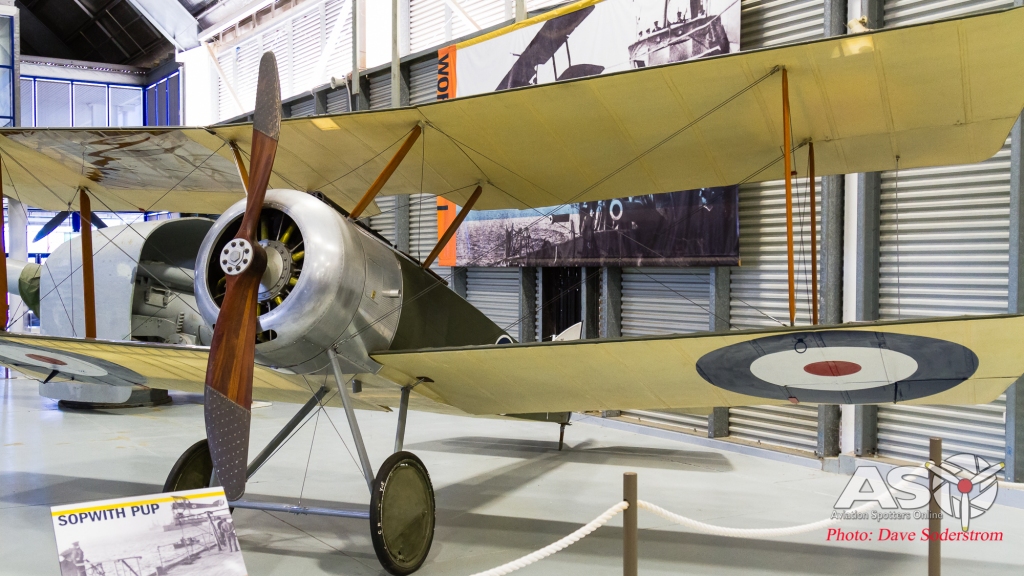
The replica has some fabric left off to illustrate its internal construction. The aircraft is a very accurate representation of this airframe. The Pup was embarked on HMAS Australia and Sydney, with five examples used in service.
Along with the Pup replica is several displays showcasing the Navy’s earliest days.
CAC Ca-25 Winjeel
The CAC CA-25 Winjeel is a type which didn’t see service with the RAN. This particular airframe is the prototype CA-22 A85-364, it is on loan from from the RAAF Museum.
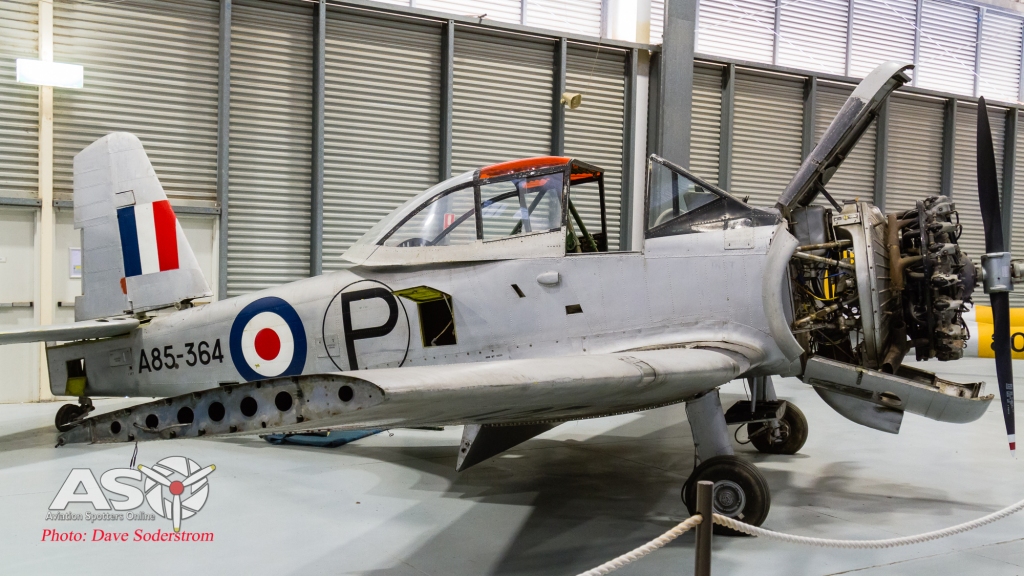

De Havilland Sea Vampire
Next along is the De Havilland MK T.22 Sea Vampire. Thirteen of them serving the RAN. On display is Vampire XG770 it is painted as XG766. The aircraft was delivered to the RAN in 1957.
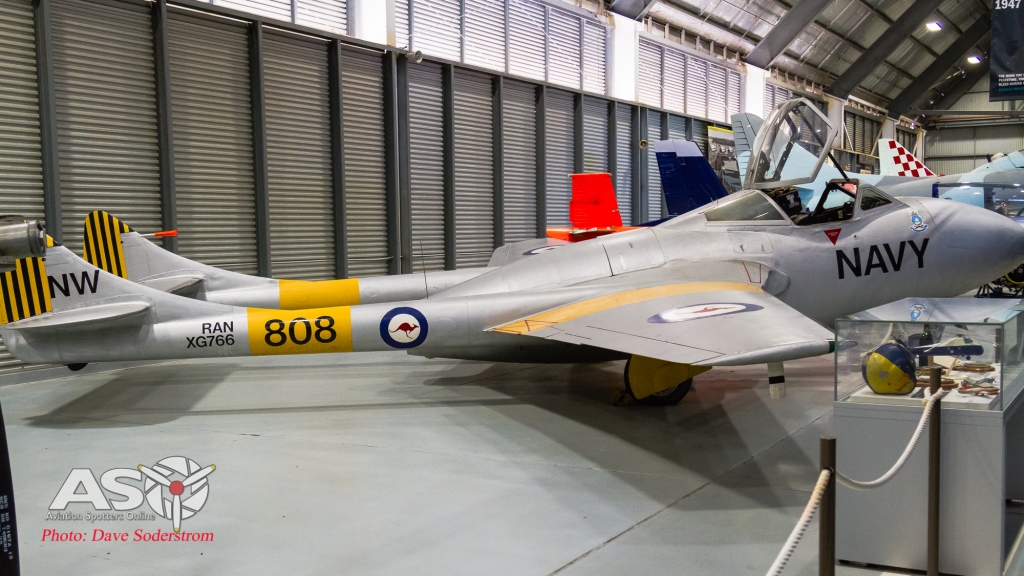

GAF Jindivink
A very important type to the RAN and a type which saw extensive service with not only our Navy and Air Force. The GAF Jindivink was widely exported and saw service with the RAF, Royal Navy, USAF and Swedish Air Force among others. The Jindivink is a recoverable pilotless target drone. Twenty one of them were to see service with the RAN, powered by a 2,78olb thrust Rolls Royce Viper engine.
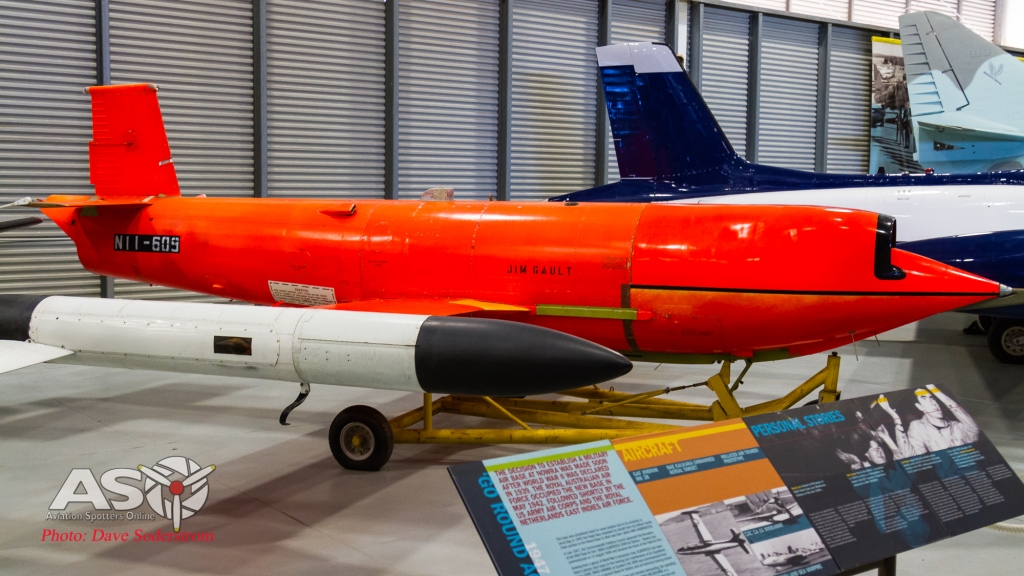
N11-609 is seen on its launch trolley

CAC Ca-32 Macchi
When the Navy had a fixed wing fleet which included the Tracker and Skyhawk, the Macchi MB-326H was ordered to train its fixed wing pilots. Ten served the fleet until being absorbed into the RAAF when the fixed wing fleet was disbanded. This aircraft flew with 724 Squadron until 1983 when it was reserialed as A7-077 for the RAAF.
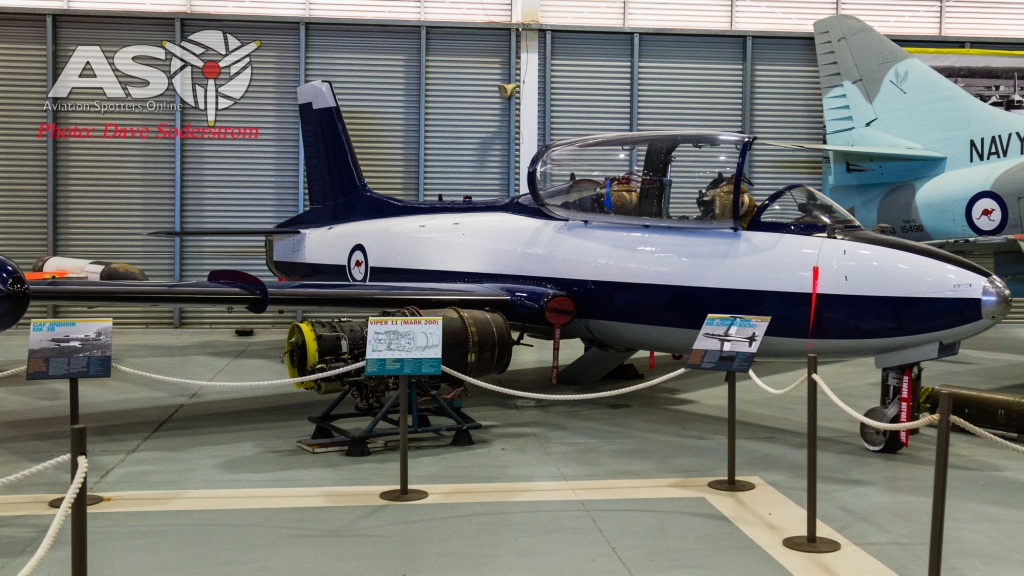
McDonnell Douglas A-4 Skyhawk
I make no apologies for a few photos of the next type. I think this zippy number is still held with high regard by both RAN and RNZAF Pilot and engineers. The ‘Scooter’ or Heinemann’s Hot Rod was to serve the RAN for 17 years. 20 airframes were purchased to serve aboard HMAS Melbourne. 16 single seat A-4G and four TA-4Gs were flown with 805 Squadron the carrier attached squadron and 724 which was the land based counterpart. The aircraft flew in a variety of roles in RAN service with evreything from fleet defence through to target towing preformed by the agile aircraft. After retirement and sale to the RNZAF the aircraft were upgraded and again some came to be based back in Nowra where the RNAF flew them in support of a defence co-operation deal between both countries. They continued to fly till retirement and subsequent sale to Draken International where they soldier on as aggressor aircraft today.

N13-154911 was delivered to the RAN in 1971 and was sold to the RNZAF in 1982. Serving with the RNZAF till retirement from this air arm the aircraft was gifted back the FAAM Museum and was demodified back to TA-4G status externally and repainted in its camouflage scheme as 88)


A second Scooter is on display, this is single seat version. Marked as the first airframe delivered to the RAN N13-154903 or 882 this aircraft isn’t actually what it presents itself as. Its actually an ex US Navy A-4B Bu No 142871 which is on long term loan to the FAAM Museum. Its great to see two versions of the Skyhawk side by side and if you talk to anyone who has been Nowra long enough they still wish they were active on the base!



Grumman S-2 Tracker
Serving on HMAS Melbourne along side the Skyhawk was the Anti Sub Marine Patrol role Grumman S-2 Tracker. A total of 32 of these glorious aircraft served the RAN from 1966 until retirement in 1984. The type initially entered service in the E or Echo model with fourteen of the type flying in active service plus one ex US Navy airframe used for instructional purposes. The E model flew on with the loss of one airframe until 1976 when ten were destroyed in a huge Hangar fire. Quickly 16 refurbished ex US Navy G or Golf model were ordered to replace them. One A model also ‘served’ as an instructional airframe as well. Today the museum has N-12153582 ‘859’ proudly on display within the hall.
![]()
![]()
If your into your helicopters then the FAA Museum is going to be Nirvana for you with every type that has served the RAN on display from the earliest to the very latest.
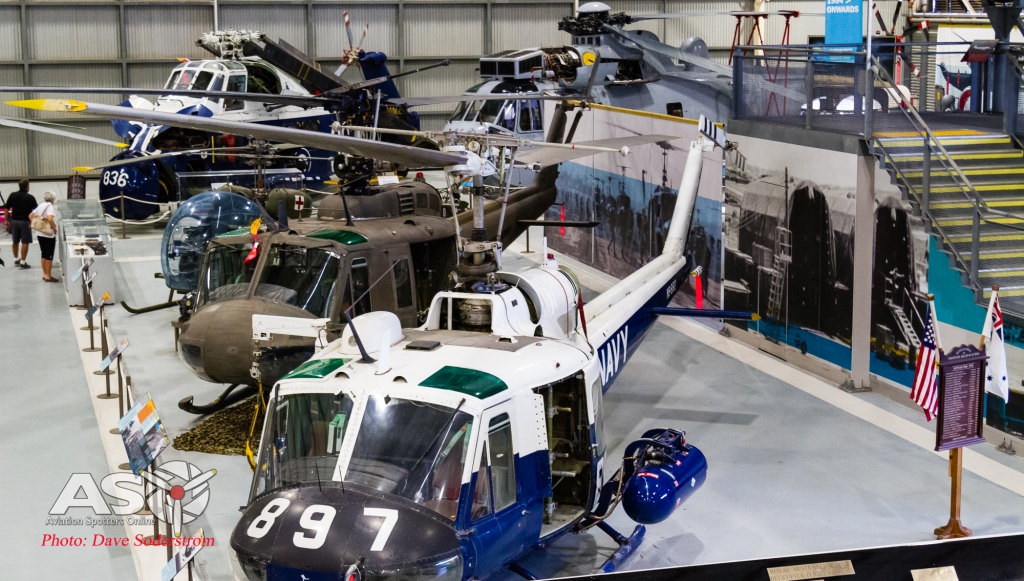
Bell UH-1 Huey
First Cab of the rank is the unmistakable workhorse of many air arms the Bell UH-1 Huey. The RAN operated seven of the B or Bravo and C or Charlie models. Entering service in 1964, and flying with 723 Squadron the type was flown until replacment by the Squirrels in 1984.

N9-882 is shown configured for its SAR (Search and Rescue) Role.

Next along is another Huey this time and ex United States Army UH-1H. This particular airframe was crewed by members of the RAN Helicopter Flight Vietnam. which was part of the US Army’s 135th Assault Helicopter Company. It was rescued after its US Army service was finished and was flown to Nowra by the RAAF for display.

Bell 47
Another classic helicopter the Bell 47 made famous in the MASH TV series is on display this airfame is another ex RAAF aircraft being A1-640. It is painted up as a US Army example. It is on display to showcase the 161 Reece Flight in Vietnam.

Westland Scout
A type which served in very limited numbers was the Westland Scout. Two examples were to serve the RAN for use on the HMAS Moresby. Used in support of survey operations from the ship the type served with 723 Squadron from 1963 to 1973. the second example ditched into the sea off New Gunia in 1967, it was recovered however was written off.

N8-101 is on display within the display hall. This aircraft was nearly completely destroyed after a take off incident in 1985.
Westland Wessex
On the opposite end of the physical scale and numbers serving the RAN is the big Westland Wessex Mk.31. Twenty Severn of these Anti Submarine and Utility helicopters served with including HS817 Squadron which operated them on HMAS Melbourne. The Wessex was in service for a long time compared to some other types. The type entered service in 1963 and was retired in 1991. It relinquished the anti submarine role to its successor the Sea King in 1975.

Westland Sea King
The successor to the Wessex the Sea King also from the Westland factory entered service with 817 Squadron in 1976. The initial order of 10 HAS.50 versions was supplemented by two attrition airframes in 1980, with a further ex Royal navy example in 1986. The King as it was known by those who flew and operated it was a very popular and versatile airframe. The type was originally employed for the anti submarine role, and was also embarked upon HMAS Melbourne. As time marched on the anti submarine mission was passed to the Seahawk. The type went on to a new roles which included and not limited to Army support, Search and Rescue and disaster relief. Retirement for the King came after 35 years of amazing service to the nation.
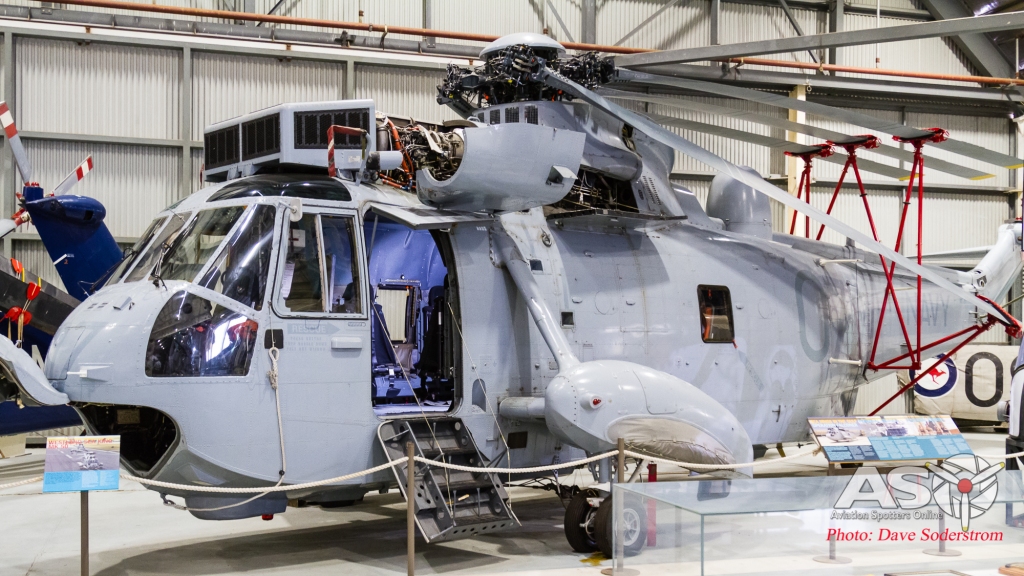
N16-118 or Shark 07 is proudly on display at the museum. This work horse is the Veteran of two Gulf Tours, including action in Gulf aboard HMAS Kanimbla during 03-04/2003 on operations Bastille & Falconer. Retired in 2011 the aircraft is a fine tribute to the crews who flew and operated the type.
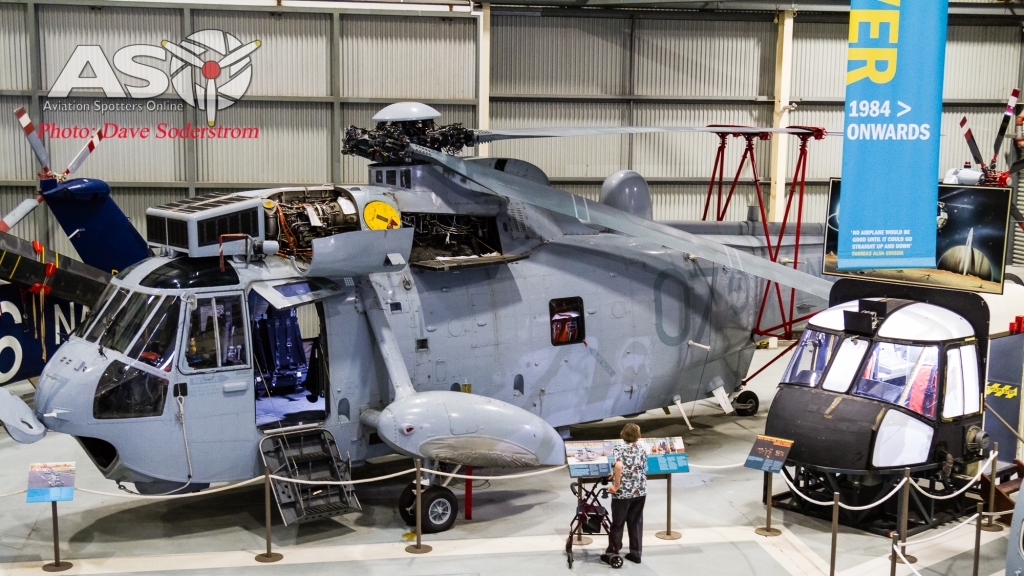
The Sea King simulator is also a display item now and is shown to the right of Shark 07.

Shark 07s cockpit.
Sikorsky S-70B Seahawk
The S-70B Bravo model Seahawk was ordered for service in 1984 to replace the then in service Sea King. The order placed in 1984 was initially for eight airframes. A follow on order for another 8 was placed in 1986. The sixteen airframes have given amazing service to the Navy. Serving in the Gulf and flying many missions the type is now in draw down with the arrival of the MH-60R to replace the type. Although or the same basic design the type as the original Bravo model the Romeo model has taken our Navy into a new era with its capabilities. Most of the fleet is now in storage as its role has been taken over with the newer aircraft. The last flight of the Bravo model occurs in December. After 28 years of service the type is well deserved to be displayed at the museum.

N24-001 was delivered to 816 Squadron in 1987.

N24-001 Seahawk Cockpit

Aerospatile AS350 Squirrel
Next in the line up of helicopters is another type in its service twilight too. The Aerospatiale AS350B Squirrel utility helicopter was ordered in 1982 and entered service 1984. The order placed was for a total of 18 airframes. 12 for the RAAF to replace its UH-1B Huey and 6 for the RAN to serve in the light utility and survey roles. The type has seen service in the gulf when the museum’s example was deployed on HMAS Adelaide, it was modified to have a 7.62 machine gun installed during these operations. the last flying examples are currently on the flight line with retirement due momentarily after 28 years of service. One example has been delivered to the Australian War Memorial, and another due to retire to the RAAF Museum at Point Cook in December.


N22-015 or Cab 862, like all Squirrels was operated by 723 Squadron.
Douglas C-47 Dakota
Four ex RAAF C-47 Dakotas were transferred to the Navy. Two were extensively modified as flying classrooms to train Navigators, and for anti sub detection. The type saw service from 1949 until 1968. On display is personally one of two Dakotas in Australia I just like. N2-43 was fitted with a Sea Venom radar in the nose and a Gannet retractable radar scanner in the floor. This very unique looking Dakota sure does stand out from the rest. This airframe joined the Navy in 1949 and continued to operate until 1970, 26 years of service between the RAAF and RAN earned its place to represent the Navy’s Dakota activities at the museum, joining it in 1976.

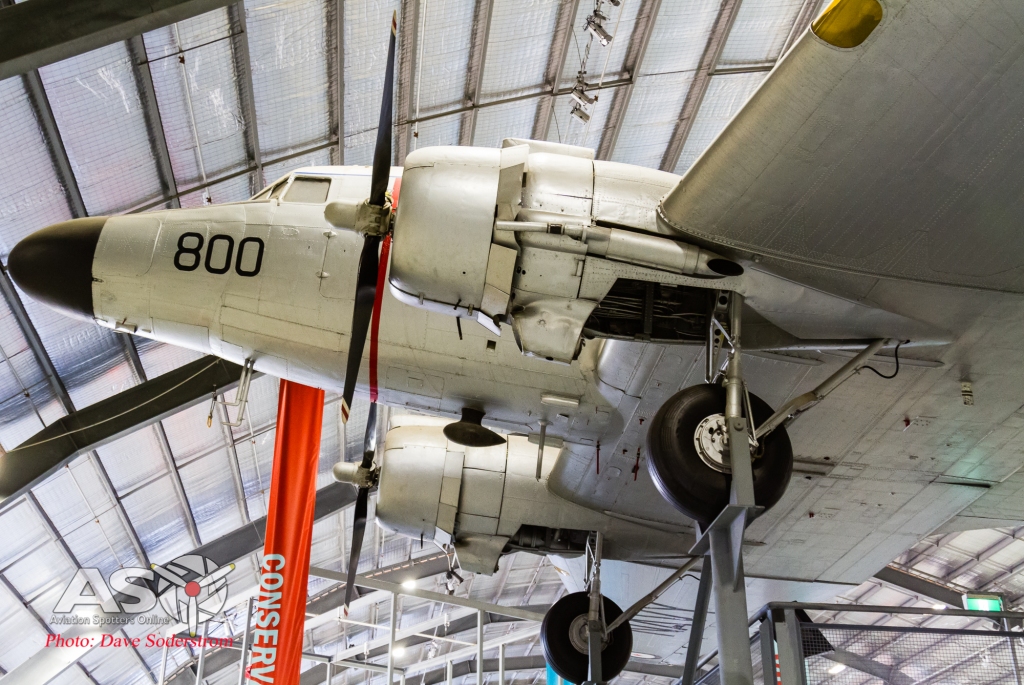
The Sea Venoms’ A1 Mk17 radar was installed in the nose to give N2-43 a unique profile.
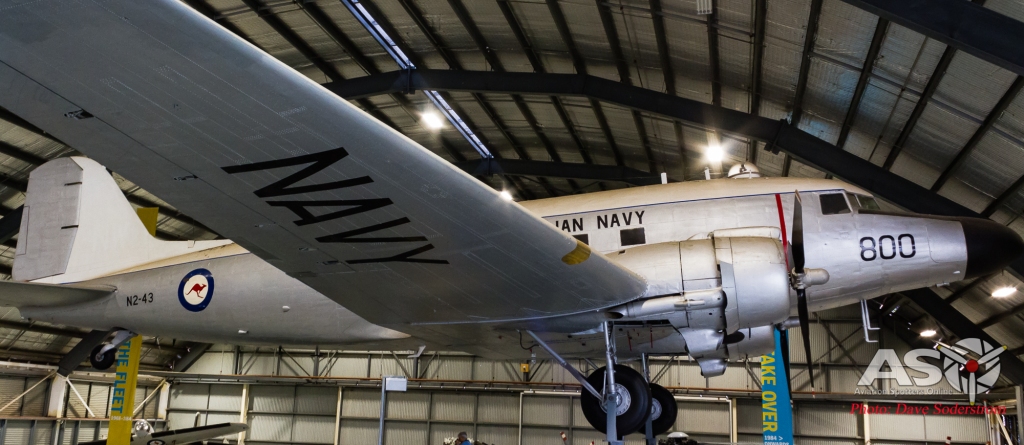
Bristol Sycamore
A very early design helicopter design is next in the line up with not one but two examples of the Navies first major helicopter type to serve. The Bristol HR50/51 Sycamore entered service in 1953, with thirteen examples operated. The ere operated in both ship-borne and land -based roles. These roles included Search and Rescue and training. Even though the type was allocated the N5 serial prefix the type flew with its British serials for their entire service. This lasting until being withdrawn in 1965, six examples were lost during their time in service.

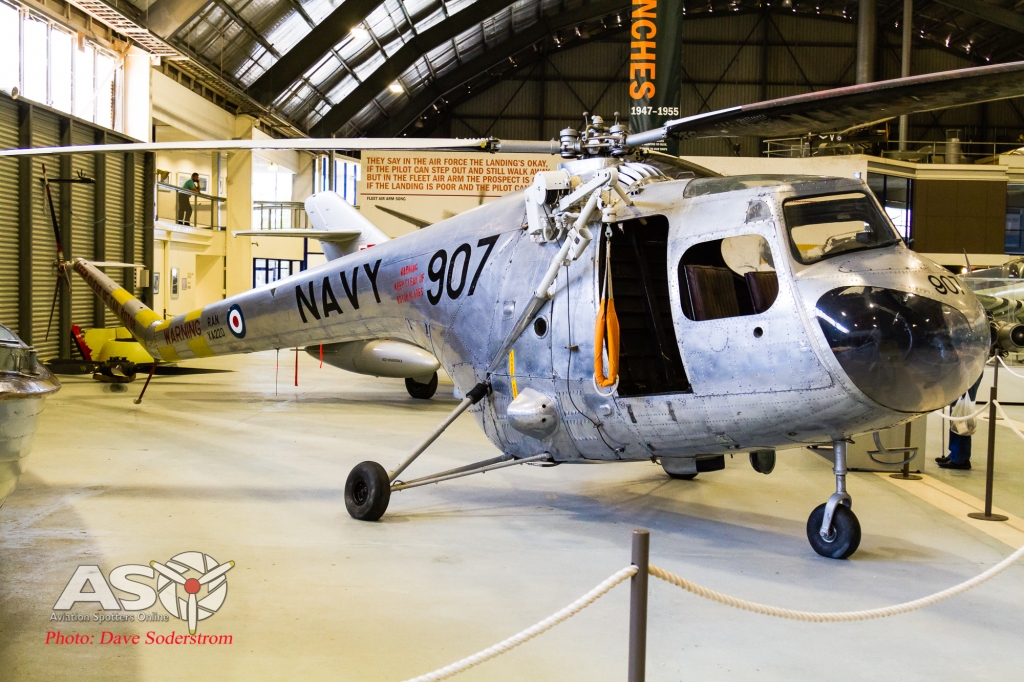
XA220 was delivered from England aboard the HMAS Vengence. Its service was short loved and after an incident in 1956 the airframe was sold off.


Sycamore HR Mk.51 XD653 is seen wearing the later livery of royal blue with white top sides. This airframe was the last of type in service and joined the museum in 1977.
De Havilland Sea Venom
The Jet age for the Navy came in the shape of the De Havilland Sea venom FAW.53. Thirty nine were ordered to serve along side the Fairy Gannet. This combination replaced the Sea Fury and Firefly in RAN Carrier service. They entered service in 1956 and flew with Nos 808, 805, 816 and 724 Squadrons. Delivered to the Royal Navy initially, they flew most of their careers with British serials, this was changed much later in their service life. HMAS Melbourne delivered them to Australia on it’s maiden voyage in 1956.
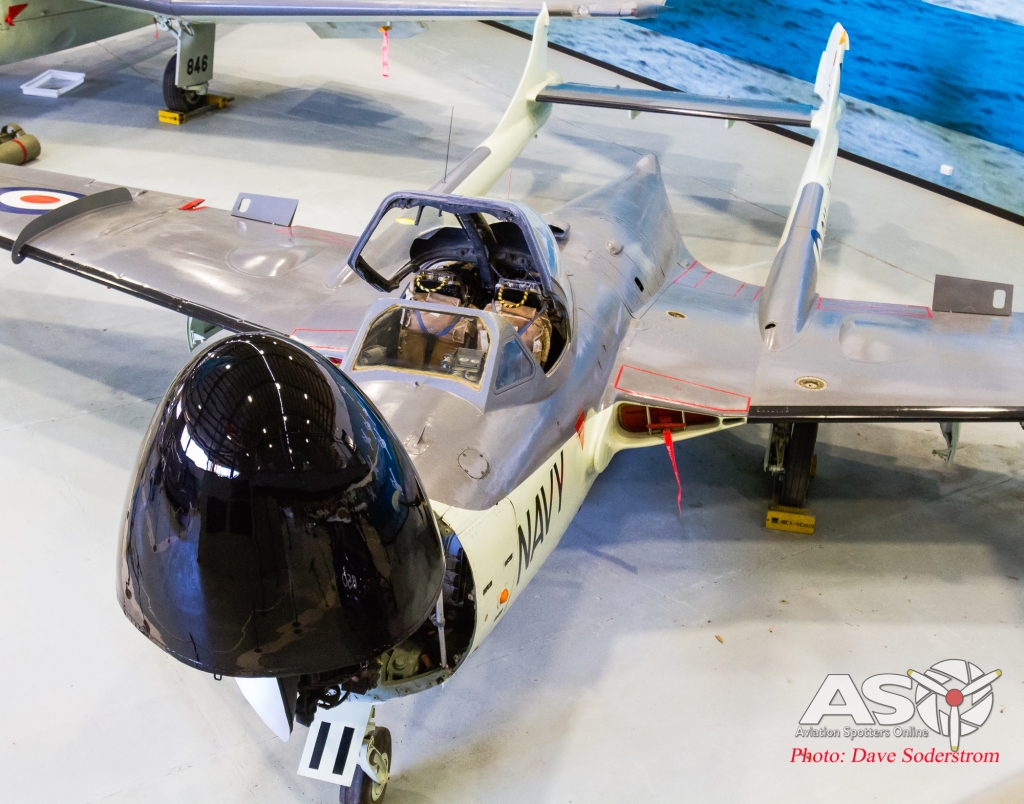
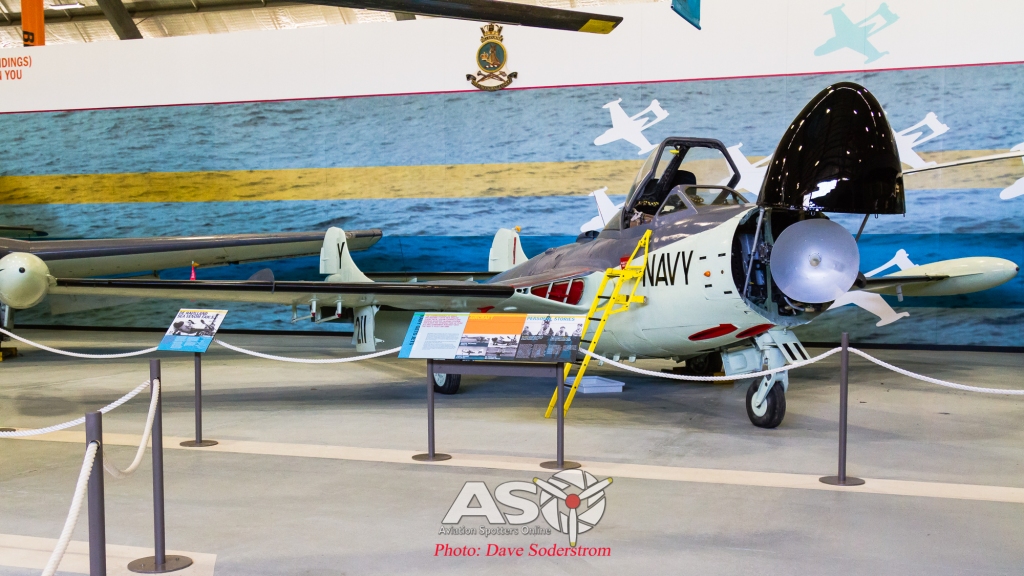
N4-937 was delivered initially as WZ937. The aircraft was restored to ground running condition.

The nose-mounted A1 Mk17 radar enabled the observer to scan or aim in a fixed direction when searching for surface or airborne targets. The radar image could also be beamed onto the gyro gunsight; a great advantage at night or low visibility.
Fairey Gannet
The work horse of the Navy between 1955 and 1967 the Fairey Gannet flew the anti submarine role for onboard the HMAS Melbourne with Nos 816 and 817 Squadrons. As with most type there were also land based aircraft and these flew with Nos 724 and 725 Squadrons.

Forty of these huge 3035 hp Double Mamba engine contract-rotating propeller monsters were to see service in the AS.1, AS,4 T.2 and T.5 variants. The Gannet was replaced in service by the Grumman S-2 Tracker.

Fairey Firefly
The Fairey Firefly was a major player in the development of the RAN, serving alongside the Hawker Sea Fury. Both types went to fight in the Korean War. Flying from the two aircraft carriers then in service the HMAS Sydney and HMAS Vengence The HMAS Sydney’s then embarked Nos 817 Squadron flying the Firefly flew combat operations between 1951 and 1952, with three lost in this area of operations. The type was used on missions to disrupt the North Korean war system. Flying both dive and low level bombing missions. Post war the type was put to service in an anti submarine role. The type was also employed in the Target towing role in its twilight. It was formally withdrawn from service with the last flight preformed in 1966. 108 examples were to serve the RAN, powered by the Rolls Royce Griffon 74 which produced 2,245 horse power.


WJ109 is an AS.6 version. It joined the museum collection in 1973.
Hawker Sea Fury
The second of the pair as mentioned previously is the Hawker Sea Fury. One Hundred and one of these FB.11 versions served the Navy from 1949-1962. All flew with Royal Navy serials. Nos 805 and 808 Squadrons were embarked with the type onboard the HMAS Sydney during the Korean War. The Sea Fury flew 1,623 sorties during the conflict, eight aircraft were lost during these missions. The Sea Fury flew a variety of missions including, anti ship strikes, combat air patrols, and army support as examples. The Sea Fury never got to claim an air to air kill during the conflict. It did however post war, against an unarmed and un-piloted Auster J4. The civilian Auster manged to take off after being started and climbed to 10,000 feet. It was eventually dispatched by two Sea Furies which were close by after enjoying some gunnery practice. The type was retired from service in 1962.

WG630 was used post service as a wind testing machine which saw the outer wings removed and mounted in a rig to test building materials.
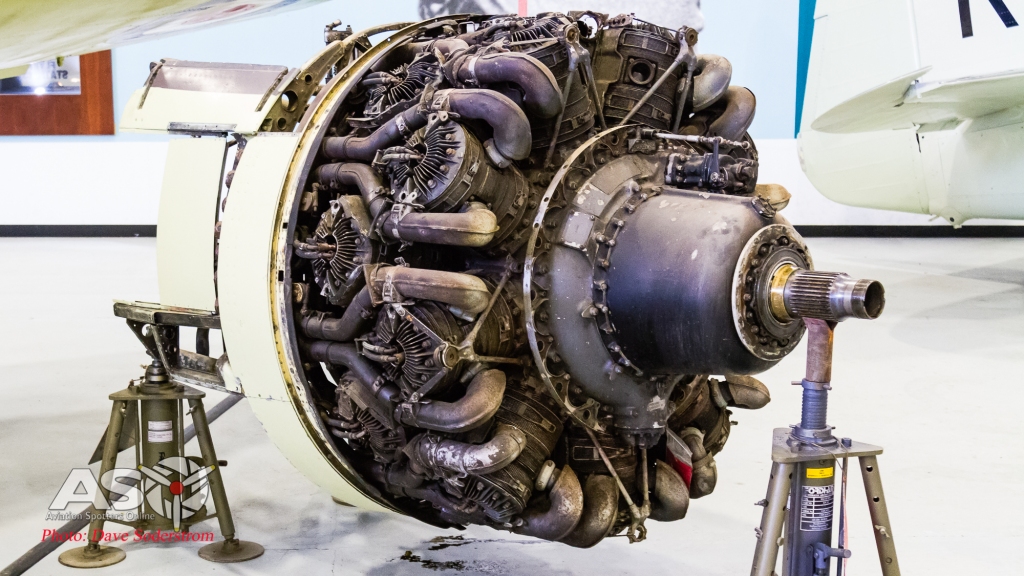
The mighty Bristol Centaurus engine produced 2,550 Horse power.

WG630 is currently being dismantled to head to the Australian War Memorial. where it replace the composite airframe presently on display.
Mig-15 (SBLim-2A)
Every museum needs an example of an adversary. On display is a Polish license built version of the Mig-15 the SBLim-2A. This aircraft is on display to show the type of aircraft that the went up against the RAN and RAAF in Korea. This particular airframe was built for the Polish Air Force and flew as Red 607. After retirement from Polish service it was one of several purchased and brought to Australia to fly on the then burgeoning Jet Warbird scene. It was registerd as VH-XIG and is now retired from flying and is a great example of the type.
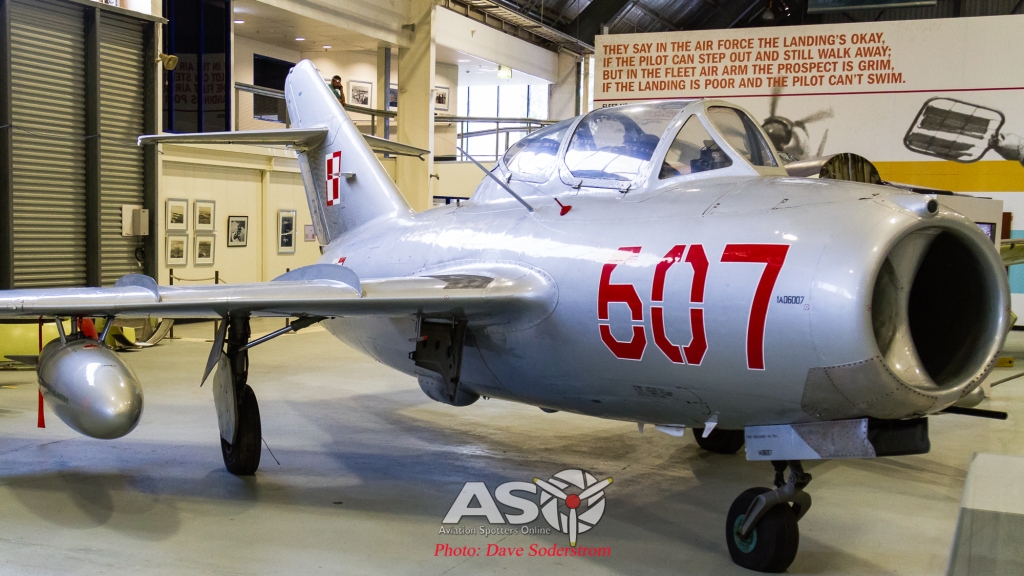
Westland Dragonfly
A current restoration being undertaken at the museum is that of another very early helicopter design the Westland Dragonfly.
During the Korean War two examples were loaned to the RAN for use aboard the HMAS Sydney as a rescue helicopter. The US version was the Sikorsky built HO3S-1. Four other Westaland built versions were also loaned by the Royal Navy for the same duties. In 2001 this example arrived in Australia, it is now under restoration to highlight the use of the type by the Navy.

WG725 a HR.3 Version was delivered and served with the RAF at A&AEE Boscombe Down in 1952.
I wish to thank the FAA Museum for their hospitality once again, and also to my good friend Jeff who assisted with my questions and acted as tour guide.
The Museum is open seven days a week except for New Year’s Day, Good Friday, Easter Monday, Christmas and Boxing Days. Pre-booked guided tours are also available.
Dave Soderstrom

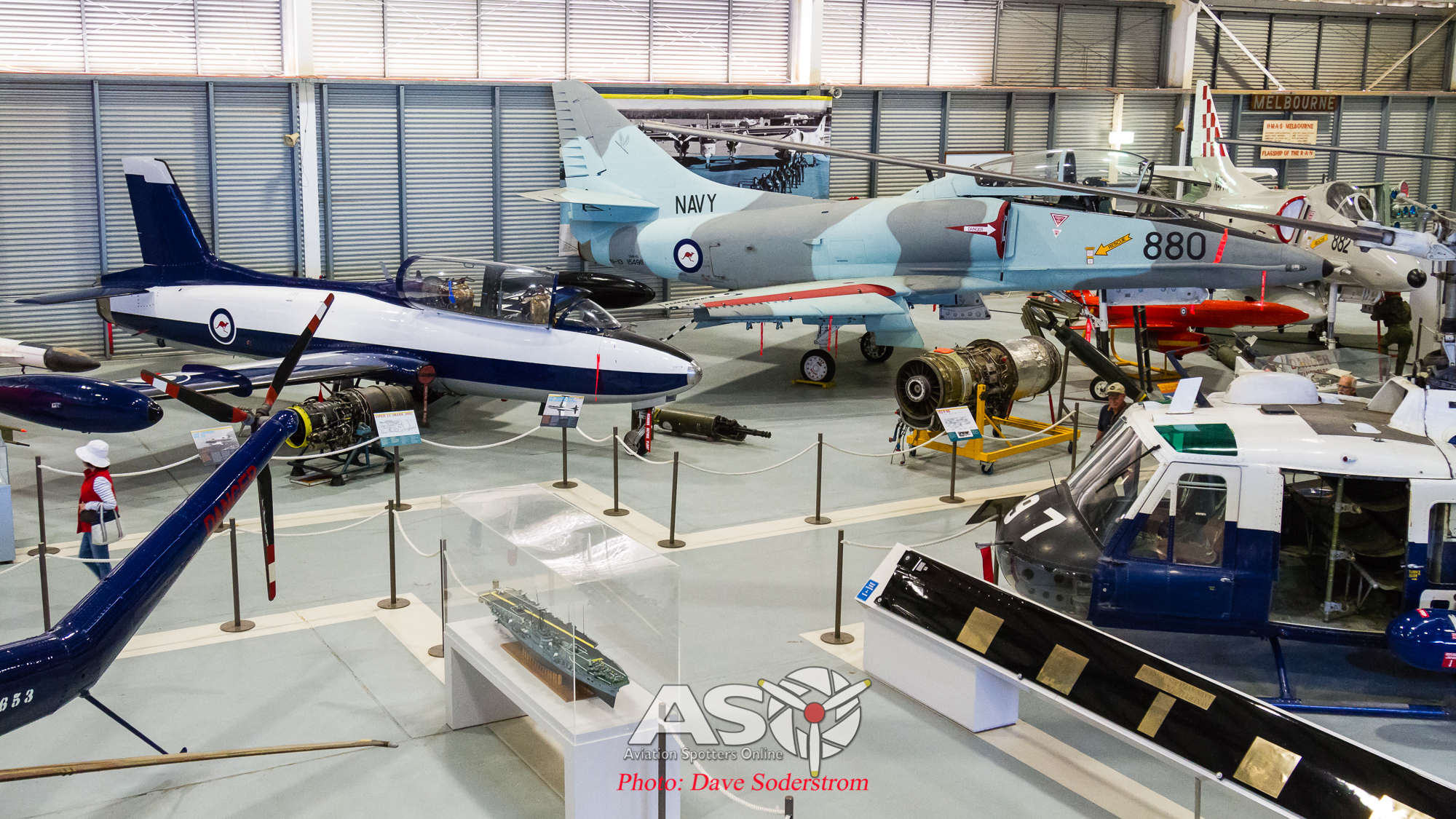
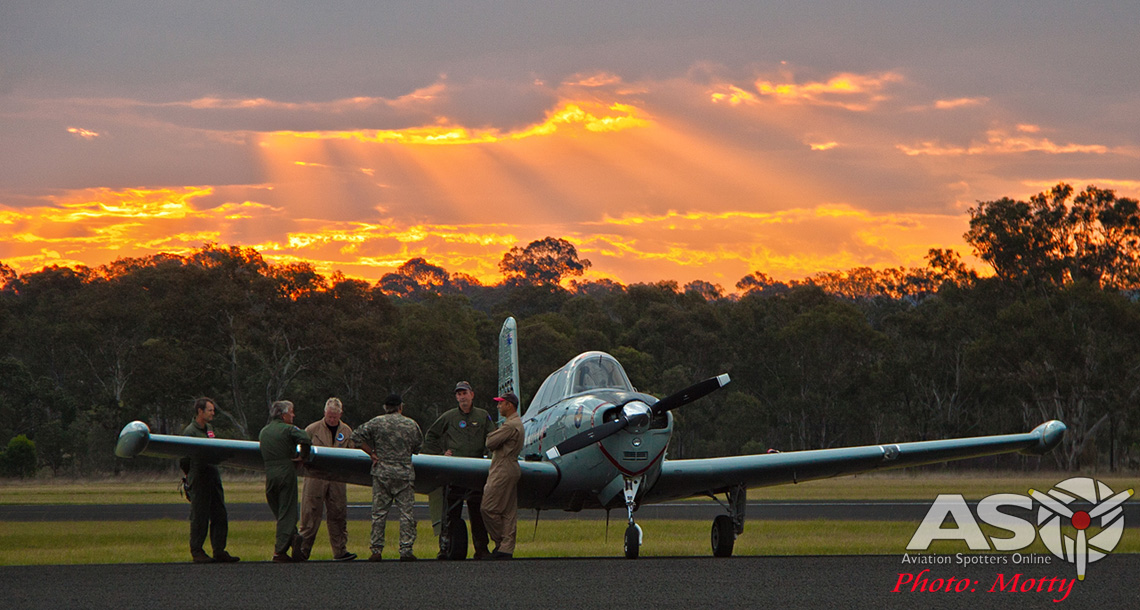

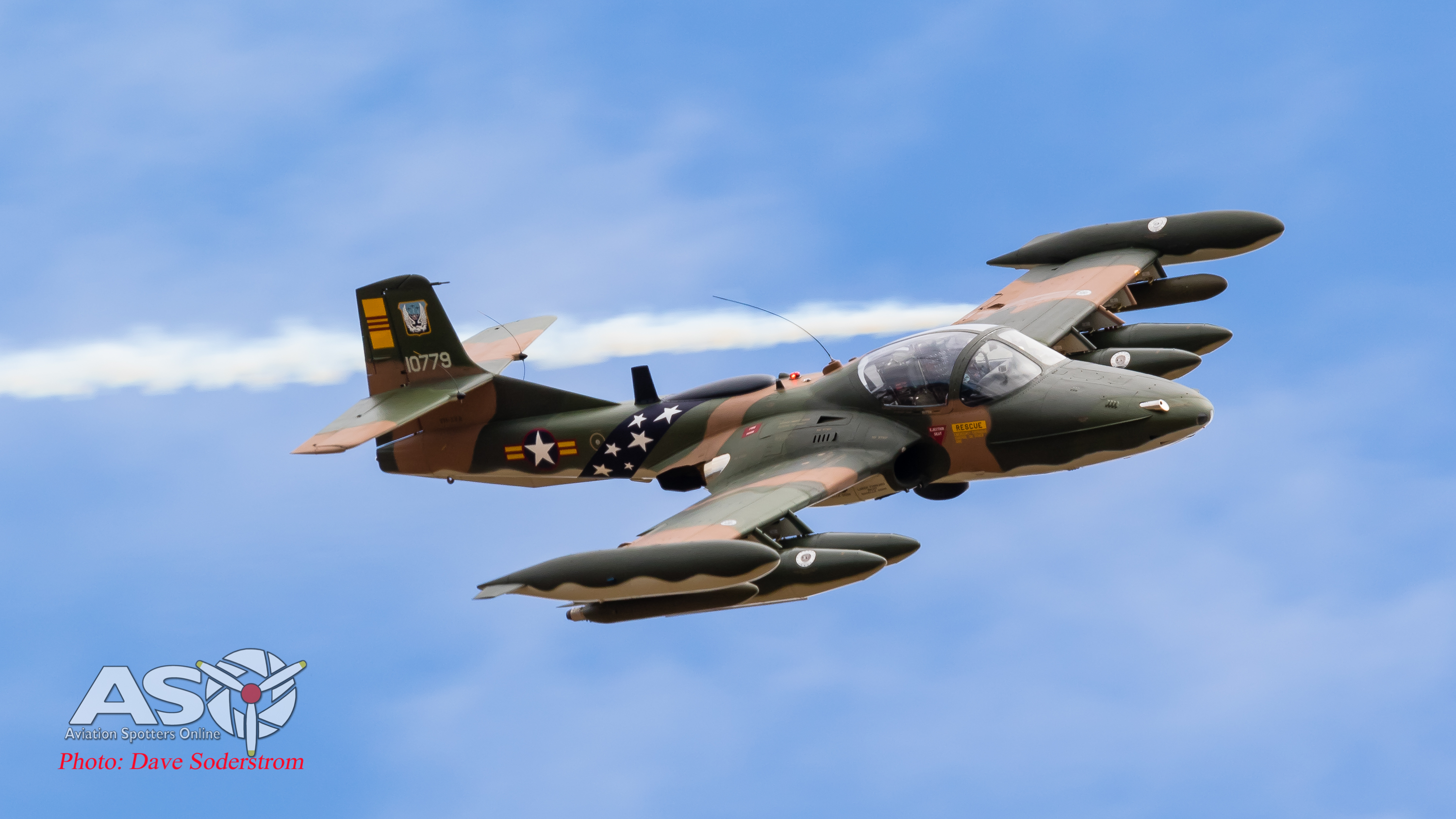
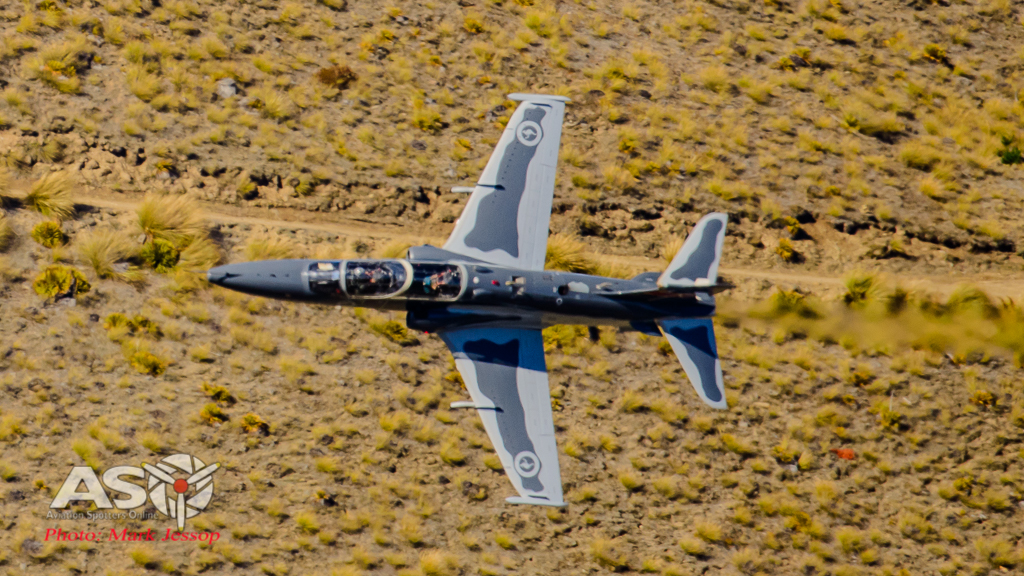





Thank you for the brilliant photos, have shared them on Twitter, hope they go far and wide.
A great well written article Dave supported with explanations of each photo.
You Aced it mate, I enjoyed the read & saved the article too!
Thank you!